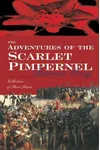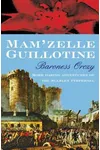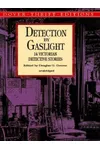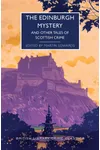Picture a Hungarian-born storyteller who spun tales of daring rescues and secret identities, captivating readers worldwide—meet Baroness Orczy! Born Emma Magdolna Rozália Mária Jozefa Borbála Orczy de Orci in 1865, she brought the swashbuckling Scarlet Pimpernel to life, blending historical romance with thrilling adventure. Her novels not only dominated early 20th-century bookshelves but also inspired countless stage and screen adaptations, making her a literary legend.
From her aristocratic roots to her vibrant storytelling, Orczy’s life was as colorful as her tales. Let’s dive into the world of this remarkable author, whose pen crafted heroes and heroines that still resonate today.
The Making of Baroness Orczy
Born in Tarnaörs, Hungary, to composer Baron Felix Orczy and Countess Emma Wass, young Emmuska, as friends called her, grew up amid sophistication and music, with family friends like Liszt and Wagner. A peasant uprising in 1868 forced the family to flee to Budapest, then to Brussels, Paris, and finally London in 1880. There, at 15, Orczy began learning English and studying art, later exhibiting at the Royal Academy. In 1894, she married Montague Barstow, an illustrator, and their creative partnership sparked her writing journey.
With little money, Orczy and Barstow worked as translators and illustrators. After their son’s birth in 1899, she penned her first novel, The Emperor’s Candlesticks, which flopped. Undeterred, she found success with detective stories in The Royal Magazine, setting the stage for her breakthrough.
Baroness Orczy’s Unforgettable Stories
Orczy’s masterpiece, The Scarlet Pimpernel (1905), introduced Sir Percy Blakeney, a wealthy Englishman with a secret identity as a daring rescuer of French aristocrats during the French Revolution. Conceived on a London Underground platform, the novel’s blend of romance, intrigue, and swashbuckling action made it a sensation. Its 1905 stage debut in London’s West End cemented its popularity, spawning over a dozen sequels, including I Will Repay (1906) and The Elusive Pimpernel (1908).
Beyond the Pimpernel, Orczy pioneered detective fiction. Lady Molly of Scotland Yard (1910) featured one of literature’s first female detectives, solving cases with intuition and flair. The Old Man in the Corner, an armchair detective, unraveled mysteries through logic in stories like The Fenchurch Street Mystery (1901). Her racy, melodramatic style and historical settings captivated readers, while her conservative beliefs and aristocratic sympathies shaped her narratives.
Orczy’s versatility shone in adventure romances and translations of Hungarian fairy tales, like Uletka and the White Lizard (1895). Her vivid characters and atmospheric plots made her a standout in the Golden Age of mystery and historical fiction.
Why Baroness Orczy Matters
Orczy’s creation of the Scarlet Pimpernel birthed the “hero with a secret identity” trope, influencing characters from Zorro to Batman. Her work bridged historical romance and modern superhero narratives, leaving a lasting mark on popular culture. As a founding member of the Detection Club, she shaped mystery fiction alongside Agatha Christie. Her advocacy during World War I, through the Women of England’s Active Service League, highlighted her social impact.
Despite personal losses, including her husband’s death in 1942, Orczy wrote prolifically until her passing in 1947. Her autobiography, Links in the Chain of Life (1947), reflects her resilience and passion. Today, her stories continue to thrill readers and inspire adaptations.
- Born: September 23, 1865, Tarnaörs, Hungary
- Died: November 12, 1947, London, England
- Key Works: The Scarlet Pimpernel (1905), Lady Molly of Scotland Yard (1910), The Old Man in the Corner (1908)
- Notable Achievement: Founding member of the Detection Club
Ready for a thrilling escape? Snag The Scarlet Pimpernel and dive into Baroness Orczy’s world of adventure and intrigue!























































